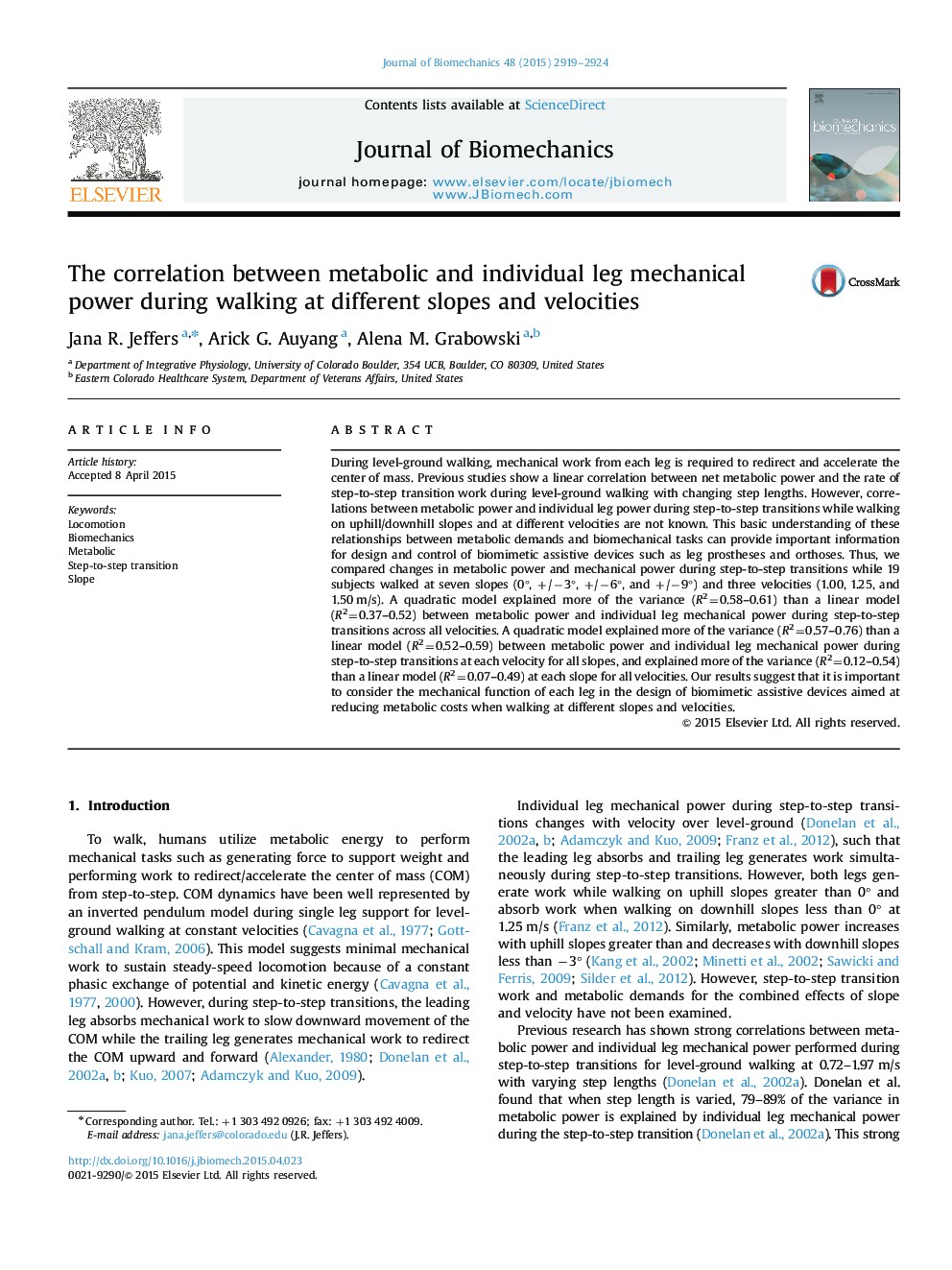| Article ID | Journal | Published Year | Pages | File Type |
|---|---|---|---|---|
| 871922 | Journal of Biomechanics | 2015 | 6 Pages |
During level-ground walking, mechanical work from each leg is required to redirect and accelerate the center of mass. Previous studies show a linear correlation between net metabolic power and the rate of step-to-step transition work during level-ground walking with changing step lengths. However, correlations between metabolic power and individual leg power during step-to-step transitions while walking on uphill/downhill slopes and at different velocities are not known. This basic understanding of these relationships between metabolic demands and biomechanical tasks can provide important information for design and control of biomimetic assistive devices such as leg prostheses and orthoses. Thus, we compared changes in metabolic power and mechanical power during step-to-step transitions while 19 subjects walked at seven slopes (0°, +/−3°, +/−6°, and +/−9°) and three velocities (1.00, 1.25, and 1.50 m/s). A quadratic model explained more of the variance (R2=0.58–0.61) than a linear model (R2=0.37–0.52) between metabolic power and individual leg mechanical power during step-to-step transitions across all velocities. A quadratic model explained more of the variance (R2=0.57–0.76) than a linear model (R2=0.52–0.59) between metabolic power and individual leg mechanical power during step-to-step transitions at each velocity for all slopes, and explained more of the variance (R2=0.12–0.54) than a linear model (R2=0.07–0.49) at each slope for all velocities. Our results suggest that it is important to consider the mechanical function of each leg in the design of biomimetic assistive devices aimed at reducing metabolic costs when walking at different slopes and velocities.
